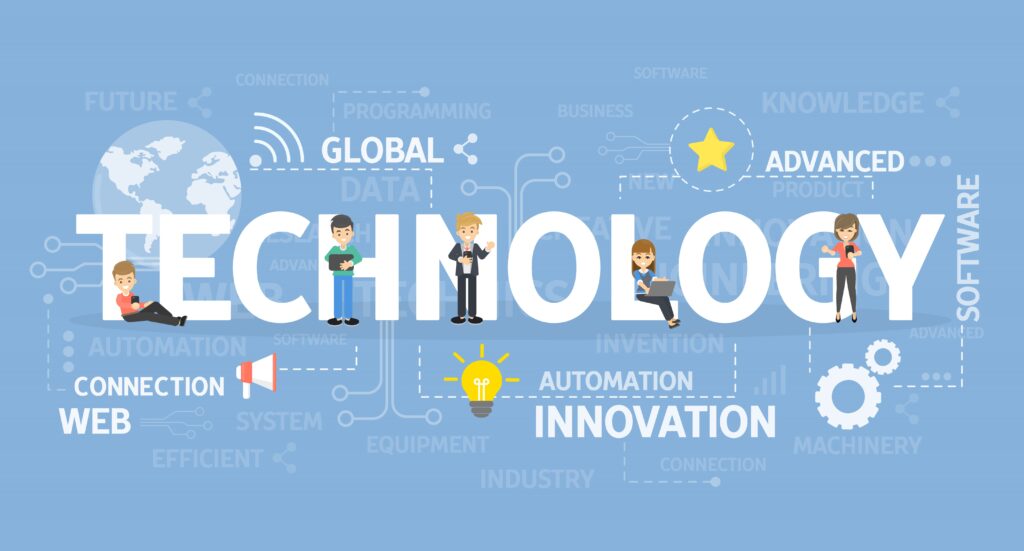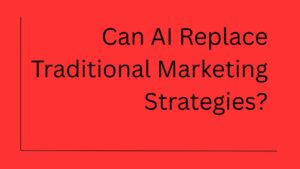Information technology (IT) has become one of the most important pillars of the way businesses, governments, and even individuals operate. You probably interact with IT daily, whether it’s through smartphones, online banking, social media, or the cloud. But what exactly is IT, and how does it shape the world around you? Let’s dive into the exciting world of information technology and explore its significance, components, and real-world applications.
Defining What is “Information Technology”
At its core, Information Technology (IT) refers to the use of systems—especially computers and telecommunications—to store, retrieve, transmit, and manipulate data. IT encompasses a wide range of tools and techniques, from the infrastructure that supports digital communication to the software applications that run on top of that infrastructure. In simpler terms, it’s the backbone of everything digital in the modern world.
When you send an email, stream a video, or use a mobile app, you’re relying on a complex network of hardware, software, and data systems, all categorized under the broad umbrella of IT. Without this technology, the digital conveniences you enjoy wouldn’t exist.
A Simple Example of IT in Action
Imagine you’re ordering food through a delivery app through popular Zomato, Swiggy. IT powers every step of this process: the app itself is software that’s been developed by an IT team, your order is sent through a secure data network, and the restaurant receives your request via their own IT systems. From start to finish, information technology makes the transaction seamless, secure, and efficient.
A Brief History of IT
While the term “Information Technology” only became popular in the latter half of the 20th century, the foundations of IT can be traced back much earlier. In fact, IT has evolved alongside human civilization’s need to process and manage information more effectively.
The Early Days: The Birth of Computing
The early forms of IT began with simple machines designed to perform calculations. Think about the invention of the abacus or mechanical calculators like those created by Charles Babbage. However, it wasn’t until the mid-20th century, with the development of the first computers, that IT really started to take shape. These early computers were room-sized machines that could perform basic mathematical operations but required significant manpower to operate.
The Digital Revolution: 1970s and Beyond
The 1970s and 1980s marked the dawn of the digital revolution, with the advent of personal computers and early networking technologies like the ARPANET (the precursor to the internet). IT evolved from a niche field to something that began to affect daily life and business operations.
Fast forward to the late 1990s and early 2000s, and you see the rise of the internet and mobile technologies. IT had moved from being a behind-the-scenes tool to becoming a mainstream necessity. Today, everything from cloud computing to artificial intelligence (AI) has its roots in IT, and the possibilities for the future seem limitless.
Key Components of Information Technology
Information Technology (IT) is a vast and multifaceted domain, but at its heart, it comprises several core components that work together to ensure the smooth functioning of digital systems. These components form the foundation of IT and understanding them gives you a clearer insight into how technology operates behind the scenes.
1. Hardware
Hardware refers to the tangible, physical parts of an IT system. This includes everything from personal devices like laptops, desktops, and smartphones to larger infrastructure components such as servers, data centers, and networking equipment.
The key role of hardware is to provide the essential platform where software can run, data can be processed, and tasks can be executed. Servers, for instance, are responsible for managing resources and storing vast amounts of information. Networking hardware like routers, switches, and firewalls manage the flow of data within local networks or across the internet.
The evolution of hardware has been instrumental in advancing IT capabilities. In recent years, we’ve seen trends like the miniaturization of devices, the rise of smart devices, and the development of quantum computing. These advancements have expanded the potential of what IT systems can do, enabling faster processing, larger storage capacities, and more reliable performance.
2. Software
Software is the intangible component of IT systems, consisting of the instructions or code that tells the hardware what to do. It is classified into two major categories: system software and application software.
- System software includes operating systems like Windows, macOS, or Linux, which act as intermediaries between the user and the hardware. They control the basic functions of a computer, such as memory management, file storage, and hardware coordination.
- Application software is more specialized and designed for specific tasks. These include programs for word processing, graphic design, or financial management, among others. Software development is one of the most crucial aspects of IT, as it continuously adapts to meet the needs of both businesses and individuals.
In the modern IT landscape, open-source software has gained significant traction, allowing users and developers to collaborate on projects, improve software security, and reduce development costs. The rise of cloud-based software has also revolutionized how software is delivered, making it accessible from anywhere and reducing the need for heavy local installations.
3. Networks and Telecommunications
Without networks and telecommunications, the interconnected world of IT would not be possible. Networks allow different computers, devices, and systems to communicate with each other, both within an organization and across the globe. There are various types of networks, including Local Area Networks (LAN), which connect devices in a limited area (like an office), and Wide Area Networks (WAN), which cover broader geographical locations.
The internet is the most extensive example of a WAN, connecting billions of devices globally. Networks rely on a range of protocols, such as TCP/IP, to ensure that data is transmitted accurately and efficiently. Telecommunications systems, including fiber optics, cellular networks, and satellite communications, are key to facilitating this data transmission.
In today’s digital age, the rise of 5G networks is opening up new opportunities for IT applications, from enhanced mobile connectivity to enabling the Internet of Things (IoT). This advancement is critical in industries that require real-time data processing, low-latency communications, and massive device connectivity.
4. Data Management
Data has become the most valuable asset for organizations in the information age. The role of IT in data management is to collect, store, process, and analyze large volumes of information in a structured and meaningful way. This involves creating, maintaining, and optimizing databases that store everything from customer information to financial records.
IT systems facilitate the management of both structured data (organized in a defined format, like spreadsheets) and unstructured data (such as social media posts, emails, and multimedia files). Tools like relational databases, data warehouses, and data lakes are used to manage this information.
With the increasing amount of data being generated, data analytics and big data technologies have become pivotal. Companies rely on sophisticated IT tools to extract insights, make predictions, and drive business strategies. The ability to process and analyze vast amounts of data in real time enables businesses to be more agile and responsive to market changes.
5. Cybersecurity
As IT systems become more advanced and data becomes more valuable, the risk of cyber threats has grown exponentially. Cybersecurity is the practice of protecting systems, networks, and data from attacks, breaches, and other unauthorized access. In the context of IT, cybersecurity involves a range of strategies, tools, and best practices to ensure the integrity, confidentiality, and availability of information.
Cybersecurity is not just about preventing hacking attempts; it also includes measures to protect data from loss due to accidents, disasters, or system failures. Methods such as encryption, firewalls, antivirus software, and intrusion detection systems are all part of a comprehensive cybersecurity strategy.
The rise of ransomware, phishing, and DDoS attacks has made cybersecurity a critical concern for businesses and governments. As IT systems continue to expand into new areas like smart cities and autonomous vehicles, ensuring robust security measures is essential to prevent disruptions and protect sensitive data.
The Importance of IT in Modern Society
Information Technology is no longer a niche field—it is the backbone of modern society, touching every industry and aspect of daily life. The significance of IT goes beyond the technical realm; it drives innovation, enables economic growth, and fosters global connectivity. Let’s explore the major ways IT impacts modern society.
1. Business and Commerce
The business world as we know it today would be unthinkable without IT. From small startups to global corporations, IT has transformed how businesses operate, market, and deliver products and services. IT systems facilitate supply chain management, customer relationship management (CRM), and enterprise resource planning (ERP), enabling businesses to run efficiently and scale up rapidly.
Automation is another major benefit that IT brings to businesses. IT allows for the automation of repetitive tasks, improving productivity and reducing human error. In industries such as manufacturing, logistics, and finance, automation powered by IT systems is crucial for staying competitive in an increasingly globalized market.
With the rise of e-commerce, IT has created new avenues for businesses to reach customers, expand their markets, and improve customer service. Online platforms, mobile apps, and digital marketing are all driven by IT, enabling businesses to interact with customers in real-time and provide personalized experiences.
2. Healthcare
Healthcare has undergone a technological revolution, thanks to advancements in IT. Medical records are now stored electronically through Electronic Health Records (EHR) systems, allowing healthcare providers to access patient data instantly. This enables more coordinated care, faster diagnoses, and better treatment outcomes.
IT also supports innovations like telemedicine, where patients can consult doctors remotely, eliminating the need for in-person visits in certain cases. Healthcare providers are using IT to improve operational efficiency, manage patient information securely, and even implement predictive analytics to anticipate health trends.
Moreover, IT plays a critical role in the research and development of new medical treatments and pharmaceuticals. High-performance computing and data analytics are used to model diseases, test drug efficacy, and conduct genomic studies.
3. Education
IT has revolutionized education by making learning more accessible and interactive. The rise of e-learning platforms and online courses has democratized education, providing opportunities for learners across the globe to gain knowledge and skills without the need to attend physical classrooms.
With the help of IT, educators can deliver personalized learning experiences, track student progress, and provide resources that cater to different learning styles. Learning Management Systems (LMS), virtual classrooms, and educational software have reshaped how institutions approach teaching and curriculum development.
IT is also empowering students with tools for collaboration and research. Through digital platforms, students can access a vast array of resources, interact with peers and instructors, and participate in immersive learning experiences such as virtual reality (VR) simulations and interactive labs.
4. Government and Public Services
Governments worldwide are using IT to enhance public services, improve governance, and foster transparency. E-government platforms enable citizens to access essential services like filing taxes, registering businesses, and applying for permits from their homes. IT allows for more efficient and user-friendly interactions between the government and the public.
Moreover, IT helps governments streamline their internal operations, improve data management, and enhance decision-making through data analytics. From public transportation systems to disaster management, IT plays a vital role in ensuring that public services are delivered efficiently and effectively.
5. Entertainment and Media
The entertainment industry has been transformed by IT, with digital media platforms now at the forefront of content consumption. The days of traditional TV broadcasting are giving way to on-demand streaming services that provide personalized entertainment experiences. Music, movies, video games, and news are all increasingly delivered through digital platforms powered by IT.
Additionally, IT has facilitated the creation of new forms of content, from virtual reality experiences to interactive storytelling. The media industry relies heavily on IT infrastructure for the production, distribution, and monetization of content.
6. Innovation and Research
IT has accelerated the pace of innovation across multiple sectors. In scientific research, IT enables the processing of vast datasets, facilitating breakthroughs in fields such as artificial intelligence, biotechnology, and space exploration. With IT, researchers can collaborate globally, share data instantly, and leverage computational power to run complex simulations.
Emerging Trends in IT
The field of Information Technology is continuously evolving, driven by rapid advancements in both hardware and software. The impact of these emerging trends is profound, reshaping industries, creating new opportunities, and addressing some of the world’s most complex challenges. In this section, we explore the latest innovations and trends that are setting the stage for the future of IT.
1. Artificial Intelligence and Machine Learning
One of the most significant advancements in IT today is the rise of Artificial Intelligence (AI) and Machine Learning (ML). These technologies allow systems to learn from data, adapt over time, and make decisions without human intervention. AI and ML are transforming industries by enabling automation, enhancing decision-making, and improving operational efficiency.
- AI Applications: From chatbots and virtual assistants to advanced analytics tools, AI is being integrated across various sectors. In healthcare, AI is being used for diagnostic tools and personalized medicine. In business, it’s applied for predictive analytics, optimizing supply chains, and enhancing customer service.
- Deep Learning: A subset of machine learning, deep learning focuses on using neural networks with many layers (hence “deep”) to model complex patterns in data. This technology powers applications like facial recognition, natural language processing (NLP), and autonomous vehicles.
- AI Ethics and Governance: As AI technologies advance, ethical considerations surrounding data privacy, bias in algorithms, and decision accountability are becoming more prominent. The challenge lies in ensuring that AI systems are transparent, fair, and secure, while also fostering innovation.
2. Cloud Computing and Edge Computing
Cloud computing has already revolutionized how businesses and individuals access and store data. However, the next wave of cloud innovation involves a move toward edge computing—a trend where data processing happens closer to the source of data generation rather than in centralized cloud servers.
- Cloud Computing Evolution: Cloud technology allows businesses to store and process data remotely, offering scalability, flexibility, and reduced infrastructure costs. Services like Infrastructure as a Service (IaaS), Platform as a Service (PaaS), and Software as a Service (SaaS) have become the backbone of modern IT infrastructure. Companies can now access vast computing resources on-demand, enabling them to scale rapidly and minimize upfront investment.
- Edge Computing: In contrast to cloud computing, edge computing brings data storage and processing closer to the physical location where it is needed, such as in IoT devices. This is particularly useful for applications that require real-time data processing with minimal latency, such as autonomous vehicles, smart factories, and remote healthcare monitoring.
By reducing the distance data has to travel, edge computing minimizes latency and improves the speed and efficiency of data processing. As IoT devices proliferate, edge computing is expected to play a crucial role in managing the vast amounts of data they generate.
3. 5G Technology
The fifth generation of wireless technology, known as 5G, is not just an upgrade to mobile networks—it’s a transformative force that will enable faster, more reliable, and more connected systems across the globe. 5G offers higher data transfer speeds, lower latency, and the ability to connect more devices simultaneously than previous generations of wireless technology.
- Impact of 5G: 5G is expected to significantly impact industries like healthcare, manufacturing, and transportation by supporting Internet of Things (IoT) devices, improving remote work capabilities, and enabling innovations such as smart cities and autonomous vehicles.
- Use Cases: For industries like telecommunications, 5G will enable higher-quality video streaming and faster download speeds. For the manufacturing sector, it will power Industrial IoT (IIoT) applications, making smart factories more efficient and agile. In healthcare, 5G will support telemedicine, allowing doctors to perform real-time remote diagnostics with high-definition video streaming and data transfer.
The deployment of 5G networks will also play a critical role in pushing other technologies forward, such as augmented reality (AR), virtual reality (VR), and AI-powered systems that require low latency and high bandwidth.
4. Blockchain Technology
Blockchain has gained significant attention in recent years, primarily due to its association with cryptocurrencies like Bitcoin. However, its potential extends far beyond digital currencies. At its core, blockchain is a decentralized ledger technology that ensures transparency, security, and immutability of records.
- Blockchain Beyond Cryptocurrency: Blockchain is being adopted in a wide array of industries, including finance, supply chain management, healthcare, and even voting systems. By eliminating the need for intermediaries, blockchain allows for more secure, transparent, and efficient transactions and record-keeping processes.
- Smart Contracts: One of the most promising applications of blockchain is the use of smart contracts, which are self-executing contracts with the terms of the agreement directly written into code. These contracts automatically enforce and verify the fulfillment of an agreement, reducing the risk of fraud and ensuring compliance.
As blockchain technology matures, it could revolutionize how data is stored, managed, and shared, paving the way for more decentralized systems in which trust is built into the network itself.
5. Cybersecurity Innovations
With the increasing complexity of cyber threats, cybersecurity has become a critical focus for organizations across the globe. Traditional security measures are no longer sufficient to protect IT systems from sophisticated attacks. As a result, emerging trends in cybersecurity are geared toward developing more advanced, proactive defense mechanisms.
- AI in Cybersecurity: AI is playing a growing role in enhancing cybersecurity measures by identifying threats in real time, automating responses, and predicting potential vulnerabilities. By analyzing vast amounts of data, AI-driven tools can detect unusual patterns that could indicate a breach, allowing organizations to respond before significant damage occurs.
- Zero Trust Architecture: A major shift in cybersecurity strategy is the move toward Zero Trust architecture, which assumes that no user, device, or system can be trusted by default, whether inside or outside the network. Instead, every access request is thoroughly vetted before granting any permissions, greatly reducing the risk of unauthorized access.
- Quantum-Safe Cryptography: As quantum computing advances, there is a growing concern that current encryption methods could become obsolete, as quantum computers could potentially break traditional cryptographic algorithms. To counter this, research is being conducted into quantum-safe cryptography, which aims to develop encryption techniques that will remain secure even in the face of quantum attacks.
6. Internet of Things (IoT)
The Internet of Things (IoT) refers to the network of physical objects—devices, vehicles, appliances—that are embedded with sensors, software, and other technologies, enabling them to collect and exchange data over the internet. This connectivity allows these devices to interact with one another, gather real-time information, and perform tasks autonomously.
- IoT in Industries: IoT is transforming industries by improving efficiency, reducing costs, and enabling new business models. In sectors such as manufacturing, IoT devices are used for predictive maintenance, ensuring that machinery operates optimally by identifying potential issues before they result in downtime. In agriculture, IoT-enabled sensors monitor soil moisture levels, optimizing irrigation systems and improving crop yields.
- IoT in Everyday Life: IoT also impacts everyday life through smart homes, where appliances such as thermostats, lighting systems, and security cameras can be controlled remotely. This level of automation improves convenience, energy efficiency, and security, making IoT a critical driver of innovation in both the consumer and industrial sectors.
As IoT continues to expand, it will generate vast amounts of data that require effective management, analytics, and security solutions, further driving the need for advancements in IT infrastructure and services.
7. Quantum Computing
Although still in its early stages, quantum computing is one of the most groundbreaking trends in IT. Unlike classical computers, which process data in binary (0s and 1s), quantum computers use quantum bits (qubits) that can represent multiple states simultaneously. This enables quantum computers to process complex calculations at speeds unimaginable by today’s standards.
- Potential Impact: Quantum computing has the potential to revolutionize industries that rely on heavy computational power, such as pharmaceuticals (for drug discovery), finance (for risk modeling), and cryptography (for breaking complex encryption codes).
- Challenges Ahead: While quantum computing holds immense promise, there are still significant technical challenges to overcome, including error correction, qubit stability, and scaling the technology for commercial use. However, as research and development progress, quantum computing could redefine the boundaries of what IT systems can achieve.
8. Augmented Reality (AR) and Virtual Reality (VR)
Augmented Reality (AR) and Virtual Reality (VR) are immersive technologies that are gradually becoming integral to sectors such as entertainment, education, and healthcare. These technologies allow users to interact with digital environments or overlay digital information onto the physical world, enhancing how information is experienced and understood.
- AR and VR in Business: In the corporate world, AR is being used to enhance training programs, allowing employees to learn in simulated environments without the risk of real-world consequences. VR, on the other hand, is being used in industries like architecture and real estate, enabling clients to take virtual tours of buildings before construction even begins.
- Future Potential: The future of AR and VR extends beyond entertainment, with the potential to revolutionize remote collaboration, virtual learning environments, and even healthcare through remote surgeries performed using AR-guided systems.
Conclusion
Information Technology is the foundation of modern life, powering everything from where you shop online to how you communicate with loved ones. It’s hard to imagine a world without IT, given its role in virtually every aspect of your daily routine. Whether you’re using it for business, healthcare, entertainment, or simply staying connected, IT continues to evolve at a breakneck pace, offering exciting new opportunities for innovation and efficiency.
By understanding the core components of IT—hardware, software, networks, data management, and cybersecurity—you gain a clearer picture of how technology works behind the scenes. Furthermore, by keeping an eye on emerging trends like cloud computing, AI, and 5G technology, you stay ahead of the curve in a world that’s increasingly driven by information.
In short, IT isn’t just a technical field for specialists; it’s the engine that drives modern life, empowering individuals and businesses alike to thrive in a connected, digital landscape. By embracing the possibilities of IT, you not only keep pace with technological advancements but also unlock the potential to reshape the future.





